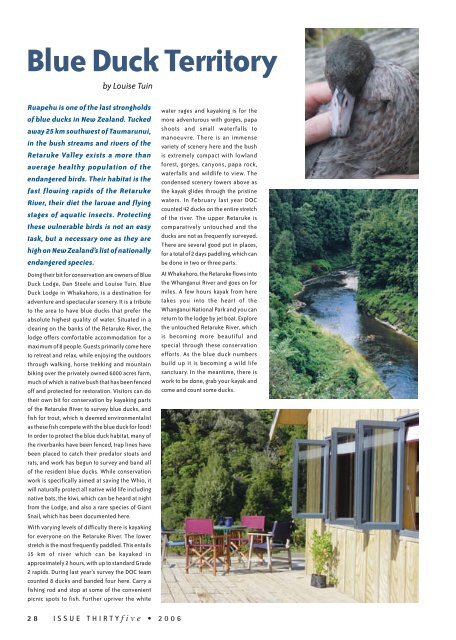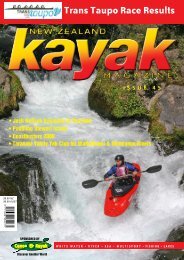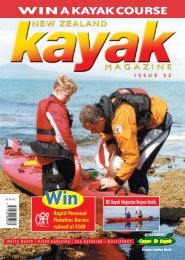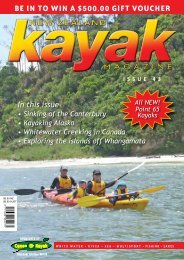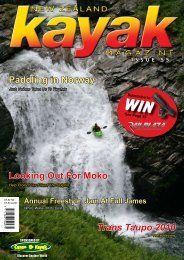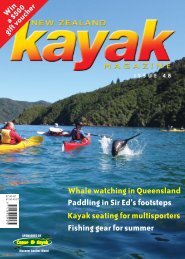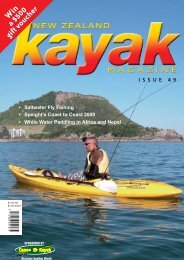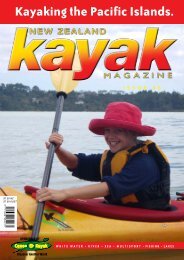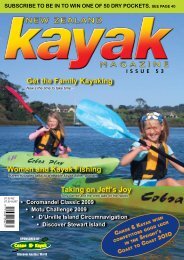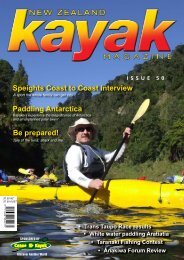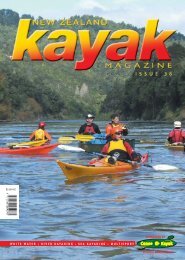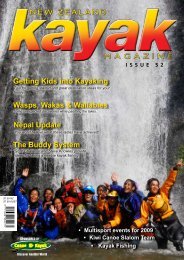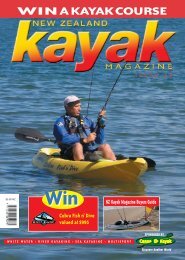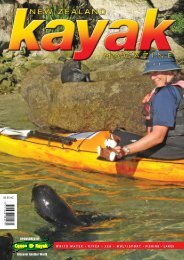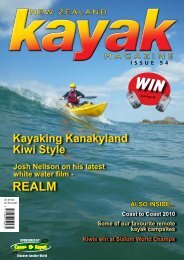c&k#35 dps-m spg - Canoe & Kayak
c&k#35 dps-m spg - Canoe & Kayak
c&k#35 dps-m spg - Canoe & Kayak
Create successful ePaper yourself
Turn your PDF publications into a flip-book with our unique Google optimized e-Paper software.
Blue Duck Territoryby Louise TuinRuapehu is one of the last strongholdsof blue ducks in New Zealand. Tuckedaway 25 km southwest of Taumarunui,in the bush streams and rivers of theRetaruke Valley exists a more thanaverage healthy population of theendangered birds. Their habitat is thefast flowing rapids of the RetarukeRiver, their diet the larvae and flyingstages of aquatic insects. Protectingthese vulnerable birds is not an easytask, but a necessary one as they arehigh on New Zealand’s list of nationallyendangered species.Doing their bit for conservation are owners of BlueDuck Lodge, Dan Steele and Louise Tuin. BlueDuck Lodge in Whakahoro, is a destination foradventure and spectacular scenery. It is a tributeto the area to have blue ducks that prefer theabsolute highest quality of water. Situated in aclearing on the banks of the Retaruke River, thelodge offers comfortable accommodation for amaximum of 8 people. Guests primarily come hereto retreat and relax, while enjoying the outdoorsthrough walking, horse trekking and mountainbiking over the privately owned 6000 acres farm,much of which is native bush that has been fencedoff and protected for restoration. Visitors can dotheir own bit for conservation by kayaking partsof the Retaruke River to survey blue ducks, andfish for trout, which is deemed environmentalistas these fish compete with the blue duck for food!In order to protect the blue duck habitat, many ofthe riverbanks have been fenced, trap lines havebeen placed to catch their predator stoats andrats, and work has begun to survey and band allof the resident blue ducks. While conservationwork is specifically aimed at saving the Whio, itwill naturally protect all native wild life includingnative bats, the kiwi, which can be heard at nightfrom the Lodge, and also a rare species of GiantSnail, which has been documented here.With varying levels of difficulty there is kayakingfor everyone on the Retaruke River. The lowerstretch is the most frequently paddled. This entails15 km of river which can be kayaked inapproximately 2 hours, with up to standard Grade2 rapids. During last year’s survey the DOC teamcounted 8 ducks and banded four here. Carry afishing rod and stop at some of the convenientpicnic spots to fish. Further upriver the whitewater rages and kayaking is for themore adventurous with gorges, papashoots and small waterfalls tomanoeuvre. There is an immensevariety of scenery here and the bushis extremely compact with lowlandforest, gorges, canyons, papa rock,waterfalls and wildlife to view. Thecondensed scenery towers above asthe kayak glides through the pristinewaters. In February last year DOCcounted 42 ducks on the entire stretchof the river. The upper Retaruke iscomparatively untouched and theducks are not as frequently surveyed.There are several good put in places,for a total of 2 days paddling, which canbe done in two or three parts.At Whakahoro, the Retaruke flows intothe Whanganui River and goes on formiles. A few hours kayak from heretakes you into the heart of theWhanganui National Park and you canreturn to the lodge by jet boat. Explorethe untouched Retaruke River, whichis becoming more beautiful andspecial through these conservationefforts. As the blue duck numbersbuild up it is becoming a wild lifesanctuary. In the meantime, there iswork to be done, grab your kayak andcome and count some ducks.28 ISSUE THIRTYfive • 2006


